AUSTRALIA: BIKIES, TRIADS, OFFICIALS LINKED IN DRUG SMUGGLING RING
by ABC News -September 8th, 2010


“….The Triads are already reported in WikiPedia and other major reliable news and information organizations as being involved with illegal activities such as illegal gambling, loan sharking, money laundering, murder, heroin and opium, arms trafficking, prostitution, people smuggling, extortion, counterfeiting and, to a lesser extent, home invasion robberies.. etc…”
http://www.fas.org/irp/world/australia/docs/ncaaoc2.html
“. PARLIAMENT OF THE COMMONWEALTH OF AUSTRALIA
ASIAN ORGANISED CRIME IN AUSTRALIA
A Discussion Paper by the Parliamentary Joint Committee on the National Crime Authority- February 1995
3. Asian Organised Crime - Definitions
3.1 The words 'Asian', 'organised' and 'crime' each require a brief comment in order to explain the scope of the remainder of this discussion paper.
3.2 The discussion paper deals with the three ethnically-based groupings commonly regarded as making up the 'Asian' organised crime of interest to Australian law enforcement agencies:
The various Chinese groups, sometimes referred to as the triads;
The Vietnamese groups;
and the Japanese groups, generally referred to as the yakuza or boryokudan.
3.3 The Report of the Review of Commonwealth Law Enforcement Arrangements recommended that the NCA have 'a strategic and/or coordination role' in respect of eleven matters, three of which were 'Chinese Triad Societies', 'Vietnamese organised crime groups', and 'Yakuza groups' (para. 7.50(4)). The Government has accepted this recommendation..”.
http://www.flarenetwork.org/learn/asia_and_pacific/article/australia_bikies_triads_officials_linked_in_drug_smuggling_ring.htm
One of the nation's biggest investigations into organised crime has exposed an international drug importation syndicate with links to the Comancheros outlaw bikie gang, Chinese triads and corrupt Australian officials
The two-year Operation Hoffman has uncovered how multi-million-dollar crime syndicates are operating like multinational enterprises, evading police by drawing on local and overseas resources and the latest technology.
It has led to major ecstasy, heroin and crystal methamphetamine drug busts across Australia, the biggest-ever drug bust on the Pacific island group of Tonga, and the discovery in May last year of a bikie armoury in Sydney - including automatic weapons and imitation police equipment.
Those arrested include alleged drug runners with links to Chinese triads and the Perth president of the Comancheros, Steven Milenkovski.
Despite Hoffman severely damaging the bikie group, the Comancheros have continued establishing a foothold in Melbourne under the control of local club controller Amad 'Jay' Malkhoun, a convicted heroin trafficker with interests in several Melbourne strip clubs
Operation Hoffman, a landmark multi-agency investigation led by the Australian Crime Commission, has also revealed the deep links between drug importers and rogue Australian maritime workers.
A joint ABC Four Corners and The Age investigation into organised crime can also reveal that:
In Victoria, authorities have uncovered links between corrupt Melbourne port workers, the Hells Angels and prominent Italian criminals
NSW police have identified a group of drug-importing Sydney port workers with government maritime security cards who have been active since 2004
Law enforcement agencies in Sydney recently updated a list of 150 organised crime targets in NSW alone
The two-year Operation Hoffman has uncovered how multi-million-dollar crime syndicates are operating like multinational enterprises, evading police by drawing on local and overseas resources and the latest technology.
It has led to major ecstasy, heroin and crystal methamphetamine drug busts across Australia, the biggest-ever drug bust on the Pacific island group of Tonga, and the discovery in May last year of a bikie armoury in Sydney - including automatic weapons and imitation police equipment.
Those arrested include alleged drug runners with links to Chinese triads and the Perth president of the Comancheros, Steven Milenkovski.
Despite Hoffman severely damaging the bikie group, the Comancheros have continued establishing a foothold in Melbourne under the control of local club controller Amad 'Jay' Malkhoun, a convicted heroin trafficker with interests in several Melbourne strip clubs.
One of Hoffman's key targets is Hakan Ayik, 32, from Sydney, who is understood to have worked as the local manager of an international drug syndicate with strong links to the triads and which used domestic criminal networks, including outlaw bikie clubs, as distributors and to provide muscle.
NSW police intelligence describes Ayik as a ''very serious money maker'' who ''generates a lot of money'' for the Comancheros and has multiple links to waterfront workers. Operation Hoffman ended earlier this month after NSW police issued an arrest warrant for Ayik for drug trafficking. It is believed he is now on the run.
http://www.heraldsun.com.au/news/law-order/racing-watchdog-investigates-asian-crime-gang/story-fni0fee2-1226808017606
Racing watchdog investigates Asian crime gang
CARLY CRAWFORD- HERALD SUN-JANUARY 22, 2014
AN Asian triad is moving to infiltrate Australian horse racing, sparking an unprecedented investigation by racing authorities.
The Herald Sun can reveal a suspected senior figure, active within Hong Kong's notoriously violent crime gangs, has invested heavily in thoroughbred racing in Australia.
He owns a local horse stud and has connections to some of the biggest-name horses in Australian racing, including a Melbourne Cup runner.
Law enforcement and integrity figures believe the crime boss is a triad money launderer. Racing Integrity Commissioner Sal Perna confirmed he would investigate the man's activities with assistance from the Australian Crime Commission.
"We have received information about this matter and disclosed it to the ACC for assessment," Mr Perna said.
The Herald Sun cannot identify the figure or his assets for legal reasons.
The suspected triad figure is known to global integrity authorities as a key player in a powerful Hong Kong triad.
Hong Kong's dominant triads are the Sun Yee On and 14K.
A wealthy and apparently legitimate businessman, the figure heads a global manufacturing empire.
His business interests span a range of other fields, including mining, property, resources and horse racing.
He heads an international organisation that has secured ownership of a horse stud in Australia and has purchased a number of horses, according to industry figures. The stud acquired by his firm is home to some of the finest thoroughbred bloodlines in Australia. In a statement to the Herald Sun, Hong Kong police declined to publicly identify any triad members, but said: "Some individual members or persons claiming to have triad affiliations are occasionally found involving in criminal activities overseas or cross-boundary."
Triad-related crime accounts for about three per cent of all crime in Hong Kong, police said. The alleged triad figure heads a big investment firm that is listed on the Hong Kong stock exchange. Its business interests extend to Macau, the United Kingdom, China and Australia.
It does business out of a tropical tax haven.
The triad figure is listed as a director of a public company in Australia whose business relates to thoroughbreds. The Sun Yee On is Hong Kong's biggest, richest and best organised triad. It has tens of thousands of members and deals in nightclub standover, illegal gambling, drugs and extortion. According to officials from the Hong Kong Police Organised Crime and Triad Bureau, the Sun Yee On remains ¬active. Some of its members are alleged to have Communist Party links and dozens have been arrested for slashing to death members of rival gangs. Triad 14K is known for loan sharking, illegal gambling and the brutal public executions of its rivals.
http://www.fas.org/irp/world/australia/docs/ncaaoc2.html
PARLIAMENT OF THE COMMONWEALTH OF AUSTRALIA
ASIAN ORGANISED CRIME IN AUSTRALIA
A Discussion Paper by the Parliamentary Joint Committee on the National Crime Authority- February 1995
3. Asian Organised Crime - Definitions
3.1 The words 'Asian', 'organised' and 'crime' each require a brief comment in order to explain the scope of the remainder of this discussion paper.
3.2 The discussion paper deals with the three ethnically-based groupings commonly regarded as making up the 'Asian' organised crime of interest to Australian law enforcement agencies:
The various Chinese groups, sometimes referred to as the triads;
The Vietnamese groups;
and the Japanese groups, generally referred to as the yakuza or boryokudan.
3.3 The Report of the Review of Commonwealth Law Enforcement Arrangements recommended that the NCA have 'a strategic and/or coordination role' in respect of eleven matters, three of which were 'Chinese Triad Societies', 'Vietnamese organised crime groups', and 'Yakuza groups' (para. 7.50(4)). The Government has accepted this recommendation.
3.4 The Committee recognises that the vast majority of the ethnic communities referred to are not involved in organised, or indeed any, criminal activity. In using ethnicity as a defining factor, the Committee is following the well-established practice of law enforcement agencies both in Australia and overseas. In the view of these agencies, the particular criminal organisations use membership of the relevant ethnic group as a key factor in determining who is allowed to participate, especially at the more senior levels or in taking the major roles in particular crimes. Ethnic group membership is sometimes seen as a key factor enabling ethnic-group organised crime to be more successful than other groups. note#4 It is a matter for debate, however, whether the ethnic factor is sometimes overstated in the context of 'Asian organised crime' in Australia.
3.5 Russian organised crime has attracted a great deal of media interest since the break-up of the Soviet Union. However, it is not covered in this discussion paper, mainly because it is not conventionally considered as 'Asian'. Moreover, there is, it seems, little evidence that it has established any Australian presence so far. Only one significant case appears to have been reported, the one in 1993 by the Australian Federal Police (AFP): note#5
In January 1993, the AFP provided ACS [Australian Customs Service] with information which led to the targeting of Russian ships visiting Melbourne. As a result, a Russian seaman was arrested as he left the dock area in possession of 5.5kg of heroin and l50g of cannabis resin. Further inquiries resulted in the arrest of two alleged principals in Melbourne. This operation was the culmination of several years investigation and resulted in the identification of alleged syndicate members in the former Soviet Union and Australia. AFP members have travelled to Russia and as a result liaison has been established with the Russian police authorities.
3.6 However, by omitting consideration of Russian organised crime from this discussion paper, the Committee is not taking issue with the view that Australian agencies must remain alert to the real possibility that Russian-based criminal groups may target Australia. The Committee notes that the Report of the Review of Commonwealth Law Enforcement Arrangements recommended that the NCA have 'a strategic and/or coordination role' in respect of, amongst other groups, 'Eastern Block Organised Crime Groups', and that the Government has accepted this recommendation
3.7 Although geographically part of Asia, the Lebanon is not normally considered 'Asian' in the context of discussion of Asian organised crime. Hence, the Committee's discussion paper does not cover the activities of organised Lebanese criminal groups in Australia, although the Committee notes that such groups have for many years been involved in drug trafficking into Australia. note#6
3.8 Organised crime groups of ethnic Koreans reportedly exist in the United States, note#7 but there is nothing that the Committee is aware of to suggest they have established any presence in Australia.
3.9 The question of how best to define the term 'organised crime' has caused much debate over the years. note#8 For the purposes of this discussion paper, the Committee does not consider it necessary to enter into this debate or to define organised crime in any rigorous way. The following definition used by the NCA will serve: 'For the purpose of describing the broader criminal environment, the NCA defines organised crime as a systematic and continuing conspiracy to commit serious offences'. note#9
3.10 The Committee recognises, however, that an important issue in assessing the threat from, and the impact of, Asian organised crime in Australia is the degree to which it is organised. One of the suggestions made in this discussion paper is that Asian organised crime, as it impacts on Australia at least, is considerably less organised than might be thought from an uncritical reading of media reports. The Committee considers that the following observation made in 1989 by Dr Grant Wardlaw is pertinent in this context:
It seems that one problem we have is that we may often confuse criminal organisation or sophistication with organised crime. As society becomes more complex and as technologies open the way to new crimes or more sophisticated or larger scale ways of committing old ones, so the nature of crime is changing with the result that it is, almost by definition, becoming more organised. Looked at this way, most major crime will eventually become organised crime. Surely this is not what we mean when we speak of organised crime though, and use its existence to justify the creation of new investigative agencies and the legislating of new powers? Nevertheless, it seems to me that many of the cases, particularly in the drug trafficking field, which are cited as evidence of the grip of organised crime are evidence of nothing more than organisation and (rarely) sophistication. To be sure, this constitutes a serious law enforcement problem, but one which does not carry the sinister implications of being 'organised crime'. note#10
4. Chinese Organised Crime in Australia
Scope of Criminal Activity
4.1 The attention of Australian law enforcement agencies has focused on Chinese organised criminal activity in relation to a wide range of matters, including drug importation and distribution, illegal gambling, illegal prostitution, extortion, immigration malpractice and money laundering. A relatively new area in which organised ethnic-Chinese are believed to be prominent is sophisticated credit card fraud. note#11 There appears to be no solid evidence of significant organised, ethnic-Chinese, street gang activity, although it is difficult to be sure as there are many media reports that refer simply to 'Asian' gangs. note#12
4.2 The priority interest of Australian agencies has been in relation to organised, ethnic-Chinese, involvement in heroin trafficking into Australia from south-east Asia.
Drug Trafficking Activities
4.3 A 1991 assessment for the Commonwealth Government stated:
In terms of what might be termed 'mainstream' importation of heroin to meet Australian market demand, the principal source region (in terms of regularity of supply) is South-East Asia. This statement is not intended to diminish the importance and threat from other regions; a significant amount of heroin is known to be sourced from South-West Asia and the Middle East (even though seizure results indicate that these areas are responsible for 5 to 10 per cent of overall supply, some enforcement authorities estimate that the real order of magnitude is much higher than this). The assertion concerning South-East Asia as the principal source of heroin supply is persuasively based on both the consistent intelligence reporting on criminal activities and in the investigative outcomes of successful seizures of heroin. note#13
4.4 Others agree on the importance of south-east Asia as a source of the heroin arriving in Australia. The Report of the New South Wales Crime Commission for the year ended 30 June 1993, for example, stated on page 16 that 'the large importations mainly originate in China and South East Asia'. More recently, the Australian Federal Police (AFP) stated: 'Some 80% of the heroin seized in Australia can be sourced to the Golden Triangle' note#14 - that is, to the area in south-east Asia where Burma, Thailand and Laos meet.
4.5 Australian law enforcement agencies believe that ethnic Chinese have been for many years, and still are, the major organisers of heroin imports into Australia. A 1988 media report cited the National Crime Authority's Chinese liaison officer as saying that the Chinese had been linked to every major seizure of heroin in the previous two financial years, totalling 63 kg, and that an estimated 96 per cent of those cargoes seized had been triad-related. note#15
4.6 A 1991 assessment stated: 'The AFP and others estimate that Chinese crime groups are responsible for the importation of perhaps 80 per cent of all heroin being imported into Australia'. note#16 According to a media report based on a leaked 1992 national intelligence assessment, 85 to 90 per cent of heroin imports into Australia were organised by Chinese organised crime groups. note#17 The NSW Crime Commission reported in 1993: 'Essentially, heroin importation is largely controlled by persons of Chinese origin in Australia and overseas'. note#18 The AFP said in 1994 that:
Stability in the price of heroin and its quality in Australia indicate the importation of heroin into Australia is well organised and dominated by Chinese Organised Crime groups. Heroin is routed through Bangkok, the Malay Peninsula, Hong Kong and the People's Republic of China. note#19
4.7 Ethnic-Chinese are much less dominant in the distribution of heroin once it has been imported. The NSW Crime Commission reported in 1992 on organised heroin trafficking:
Some groups are concentrated at certain levels. Thus it has been observed that the highest stratum is often occupied by persons of Chinese origin who tend to be responsible for the introduction of much heroin to Australia and conduct the largest bulk transactions. It is unusual to find persons of Chinese origin in a supply stratum involving small quantities. The pattern is less consistent with other groups which will buy bulk locally and also engage in importation. Their associates within a group may occupy a range of levels in the supply chain and they will deal with groups which dominate particular levels such as the Chinese groups. note#20
4.8 A 1991 intelligence assessment stated:
One feature of heroin trafficking arrangements in Australia that reinforces the notion of an accommodation between operators, is that the majority of the importation efforts of the Chinese criminal groups is geared towards supplying other, non-Chinese, groups for their own distribution networks. The Chinese operate what is largely a heroin wholesale business, with little evidence of their further involvement downstream into retail distribution. note#21
Triad Societies and Chinese Organised Crime
4.9 In much popular discussion, Chinese organised crime is treated as synonymous with the triad societies, although the importance of the connection between the two is a matter for some debate. The following description of the triads is taken in edited form from a 1992 report of a United States Senate subcommittee: note#22
Modern triads trace their history to secret political societies formed in China during the 17th Century to overthrow the Ching Dynasty and to restore the Ming Dynasty to power. The term 'triad', later coined by British authorities in Hong Kong, is based on the triangular symbol found on flags and banners of the early secret societies. The symbol represents the three essential elements of heaven, earth, and man.
Because the early triads were attempting to topple the ruling elements of the day, and had, in fact, been persecuted in the past they developed secret forms of identification and communication. Triads today remain obsessively secretive and closed criminal fraternities. The triads also developed highly ritualized initiation ceremonies meant to instill a strong sense of secrecy, and more importantly, loyalty to other triad members. ...
The existence of triads is most extensively documented in Hong Kong, where the number of triad members is estimated to be in the tens of thousands, and to a lesser extent in Taiwan. ...
Triad societies all display some degree of hierarchy, and a typical triad has members organized by rank. Each rank carries a title and a numerical value, based on triad ritual. The leader of a triad is known as the 'Dragon Head,' and carries the rank '489'. Other 'office bearer' positions also exist, including '438', which is the second highest rank in a triad, and may be held by several different officials. ... other triad members are known as ordinary members or soldiers, and hold the rank of '49'. The relationships among individual triad members are based on ties between 'Dai-Lo's' (big brothers) and 'Sai-Lo's' (little brothers), where the Sai-Lo's give loyalty, support and sometimes money to their Dai-Lo, in exchange for protection and advice.
Although hierarchical in nature, triads tend not to be strictly controlled from the top, in contrast to more familiar crime groups such as La Cosa Nostra. Instead, triad members frequently branch out into their own criminal enterprises. While the triad leadership does not always initiate and direct the activities of all the triad members, triads clearly serve as international networking associations that facilitate such activity. Moreover, monetary profits from criminal activity of triad members often flow to the top in indirect ways, such as through gifts. ...
As one member of the Hong Kong-based 14K triad testified:
"I was not required to pay any percentage of profits to the 14K leadership. Triads do not work that way. Triad members do favors for each other, provide introductions and assistance to each other, engage in criminal schemes with one another, but triads generally do not have the kind of strictly disciplined organizational structure that other criminal groups like the Italian mafia have. For example, a triad member would not necessarily be required to get permission from the dragonhead of his particular triad in order to engage in a particular criminal undertaking - even if the particular deal involved an outsider or even a member of another triad. On the other hand, on the occasion of traditional Chinese holidays such as Chinese New Year, triad members traditionally give gifts to their 'big brother' or 'uncles' who often are office bearers in the triads."
Further testimony regarding relationships among Chinese crime groups came from Johnny Kon, a convicted heroin smuggler and triad member. He noted the importance of the Chinese concept of 'Guan Shi' in facilitating criminal relationships:
"Members of the Big Circle get power from 'Guan Shi' which is a relationship among people. Through such relationships, Big Circle members can call on triad members or other Big Circle members for help."
Triad membership is thus a valuable asset to the new international criminal. Triad membership facilitates criminal activities in a manner similar to the way membership in business associations facilitates the activities of a legitimate businessman. Thus, even though triads, as organizations, may not control a wide range of criminal activity, it is important for law enforcement officials to understand, investigate, and develop intelligence about triad organizations, because individual triad members are invariably involved in a wide range of criminal activity.
Although the criminal activities of triad members can be thought of as constituting both domestic and international activities, even domestic activities such as illegal gambling, extortion, and prostitution often have an international element. For example, prostitutes are imported or smuggled, sometimes against their will, over national borders, while proceeds from illegal domestic activities such as gambling are often laundered internationally. International activities include narcotics trafficking, money laundering, counterfeiting currency and credit cards, and alien smuggling. ...
The RHKP [Royal Hong Kong Police] estimate that there are currently about 50 triad societies in Hong Kong, with about 15 of those being very active. While it is very difficult to determine the exact number of triad members in Hong Kong, most authorities agree that there are at least 80,000. Some triads are thought to have as little as 100 members while Hong Kong's largest triad, the Sun Yee On, is believed to have at least 25,000 members.
After the Sun Yee On, the next largest triads are the Wo Group, including the Wo Hop To and at least nine other subgroups, which have over 20,000 Hong Kong members. The 14K Triad, including over 30 subgroups, is also believed to have over 20,000 Hong Kong members. The fourth largest group is the Luen Group with approximately 8,000 Hong Kong members. The Tung Group is thought to have approximately 3,000 Hong Kong members. All of these groups also have substantial overseas membership. Other triads exist with smaller membership. ...
The Big Circle Gang, which is sometimes referred to as a 'Mainland-based triad' is a relatively new group. This group initially consisted primarily of former Red Army Guards who left China for Hong Kong. Big Circle Gang members are particularly violent, specializing in armed robberies of jewelry stores in Hong Kong as well as in heroin trafficking. The Big Circle Gang is not technically a triad, but most Big Circle Gang members are also members of various triad societies. Johnny Kon, a former Big Circle associate and convicted heroin smuggler, testified that he helped organize a group of Big Circle Gang members into a tightly organized and disciplined group known as the Flaming Eagles which expanded from jewelry store robberies in Hong Kong to a world wide heroin distribution network. All of Kon's Big Circle associates were also members of other triads. ...
The main law enforcement body in Taiwan, the National Police Administration (NPA), recognizes two major Taiwan-based triads. The best known and largest of the two is the United Bamboo Gang, also known as the Chu Lien Pang. The second group is the Four Seas Gang, also known as Sei Hoi.
The United Bamboo Gang has an estimated membership of over 20,000. ... The Four Seas Gang has an estimated membership of over 5,000.
4.10 The Director of the United States Central Intelligence Agency told a United States Senate committee in April 1994:
These triads are fluid associations of criminals and quasi-legitimate businessmen based on contact networks and cultural, geographic and linguistic ties. ... The triads play an important role in worldwide heroin trafficking by facilitating transport and by providing a network of contacts for triad affiliated smugglers. They play a particularly important role in moving heroin through transshipment hubs, such as Hong Kong, Taiwan and Singapore, due to their influence over transportation unions and over shipping companies. note#23
4.11 Criminal triad societies of a sort are said to exist in Australia, even if they lack some of the characteristics of the traditional Hong Kong triad societies. The National Crime Authority's then Chairperson, Justice Stewart, said in 1988:
Broadly speaking, the Authority's investigations confirm earlier assessments that Chinese criminal elements in Australia have formed criminal associations, modelled to some extent on the traditional Chinese Triad secret societies such as exist in Hong Kong, Taiwan and elsewhere in Asia. These groups involve themselves in a wide range of criminal activities such as drug importation and distribution, extortion, fraud and money laundering.
There is no real evidence that these associations follow Triad initiation ceremonies or other rituals, or adopt a strict internal hierarchy. There is evidence however that members of well known Triad societies are resident in Australia and overseas members visit here from time to time for illegal purposes.
The power of individuals in these Australian Triad groups seems to be based on accumulated wealth, connections or demonstrated capacity for criminal enterprise rather than on traditional Triad power bases. Many of these people move with comparative ease between Australia, Hong Kong and elsewhere in South East Asia. note#24
4.12 In 1988, Mr Peter Lamb, at the time an AFP Assistant Commissioner, said that there were 'between three and ten' triad societies then operating in Australia.note#25 Media reports in 1988 claimed that Australian triad societies had perhaps 2,000 members. note#26 A 1989 report claimed that the 14K triad 'is well organised and well entrenched in Sydney, with offshoots in Melbourne'. note#27 In June 1991 a former NCA officer, Mr Carmel Chow, said: 'We are looking at maybe half a dozen triad groups in Sydney. We are talking about the Sun Yee On, the 14K, the Wo Yee Tong, the Big Circle. So really, we have half a dozen gangs now operating in Sydney.' note#28
4.13 The buyer of a 1988 importation into Sydney of 31 kg of heroin was (John) Chai Nam Yung, who was sentenced in March 1991 to 24 years' imprisonment for his part in the deal. He was described as the head of the Australian branch of the Wo Yee Tong triad, as well as being the owner of an illegal Sydney gambling club.note#29 A media follow-up story on the case said that 'Police sources here estimate that no more than half-a-dozen of these triad cells are operating in Australia, with an estimated membership of between 2000 and 3000' and that 'the majority of triad activity is centred on Sydney'. note#30 A 1992 internal report by the Asian division of the Victoria Police reportedly stated that there were known to be triads based in Melbourne and referred to members from triad groups such as the 14K, Sun Yee On, Wo Yee Tong and Wo Shing Wo. note#31
4.14 A 1992 United States report stated that the Sun Yee On triad has 'a presence' in several countries including Australia, the Wo Hop To triad 'has been tied to criminal activity' in Australia, and the Big Circle Gang 'has gained a foothold' in Australia. note#32 More recent reports from United States sources state that the 14K triad group and the Sun Yee On triad have a foothold in Australia. note#33 In September 1994, a member of the Victoria Police Asian crime squad told a court that the Sun Yee On triad had become more active in Melbourne in the previous year. note#34
4.15 The February 1994 Report of the Review of Commonwealth Law Enforcement Arrangements stated (para. 4.49):
Within Australia, it is apparent that several Triad societies do exist. As in Hong Kong, they provide a local pool of contacts for criminal ventures. Moreover, Australian residents who were Triad members in Hong Kong or other foreign countries have immediate access to a range of colleagues overseas who may be prepared to assist with criminal activities. There have been claims that certain Triad groups in Australia have operated as organisations when establishing gambling and protection rackets, but it is also possible that the criminals concerned were using a Triad's name for their own benefit and were acting outside the organisation.
4.16 As noted in paragraph 2.8 above, as long as people believe in the existence of powerful triad groups, they will be reluctant to resist the demands of those claiming to be triad members, or to inform police of their activities. This provides an incentive for ethnic-Chinese criminals to claim triad membership, however spurious the claim may be or however powerless and unorganised the triad in question may really be. note#35 Thus claims by criminals to be triad members cannot be taken at face value. Equally, assertions that criminal triads exist in Australia as powerful, well-organised, functioning entities must be treated sceptically insofar as the assertions are based on statements from criminals claiming membership in such organisations.
4.17 In 1988, the leaders of a non-criminal triad, the Melbourne-based Mun Ji Dong (MJD), which began life on the Victorian goldfields in the middle of the last century, presented their view on possible criminal triad presence in Australia. note#36
MJD members said law enforcement agencies were on the wrong track if they were working on the 'Chinese Mafia network' theory that international criminal Triads had established themselves in Australia and controlled a comprehensive range of criminal activities.
The MJD said there appeared little evidence that these crime Triads had established themselves here. A more realistic scenario was that some Chinese crime syndicates had individuals on the fringes of the Australian Chinese community, working as contacts for the importation of illicit narcotics and Asian prostitutes.
However, these people appeared to be low-profile operators without established criminal Triad power bases. 'I think we'd have spotted them (established Triad crime gangs) if they were around, but we haven't seen anything to suggest they've established themselves here,' said Mr Edmond Louey, a vice-secretary of the MJD.
Mr Louey said there were indications that some petty Asian criminals claimed 'heavy' Triad affiliations to intimidate victims.
MJD members dismissed suggestions that criminal Triads controlled illegal gambling: Chinese casinos in Melbourne and Sydney were operated by individuals.
4.18 There has in recent years apparently been some difference of opinion among law enforcement agencies in Australia and overseas about how important triads are to understanding and tackling Chinese organised criminal activity. The Chairperson of the National Crime Authority, Mr Tom Sherman told the Committee in 1992:
You get your two schools of thought, really. There is one school of thought that says the Triads are very important, and there is another school of thought that seems to be equally well informed that says that they are not so important. I suspect that, like all things, the truth lies somewhere in between.note#37
4.19 The National Crime Authority's General Manager, Operations, Mr Peter Lamb, made a similar point in a media interview in 1993: note#38
Asked if there was an organised Asian crime system in Australia, Mr Lamb said: 'I don't think anyone who has worked against organised crime would deny that.' But Mr Lamb said that was not to say groups like the Yakuza and Triads had cemented an illegal operation in Australia. The NCA's intelligence shows that some criminal groups in Australia have Triad members. But as Mr Lamb said: 'Whether that equates to the Triads being the real force behind the crime is another matter.'
4.20 As far as the Committee can discern, there is an increasing tendency to play down the relevance of triad links. It is not clear from the material available to the Committee to what extent this tendency is due to a better understanding of Chinese organised criminal activity, and to what extent it might reflect a shift in the way that activity is being conducted. There are suggestions that the more traditional, triad-oriented, way in which those criminal activities were once organised is increasingly being replaced by a more entrepreneurial, ad hoc, and multi-ethnic approach.
4.21 From a United States' perspective, the 1992 United States Senate subcommittee report previously referred to stated:
... neither triads, tongs nor gangs appear to be currently involved, as organizations, in heroin trafficking. While members of these groups frequently utilize their membership to benefit their heroin trafficking enterprises, the groups themselves are not typically part of the heroin smuggling.
... In fact, it is relatively easy for triad members to form criminal associations with members of other triads or with outsiders. note#39
4.22 An overview of the south-east Asian heroin trade was given to that subcommittee by a witness from the Central Intelligence Agency. He also stressed the fragmented, ad hoc organisation that was involved.
The main point is that Southeast Asian heroin trade is highly segmented with many independent organizations conspiring to supply the United States and other consuming countries. As heroin moves through the trafficking chain, control of the shipment is transferred several times:
In the initial phase, producers and refiners in Burma, Thailand and Laos obtain raw opium from farmers and refine it into heroin. Some three-quarters of the region's heroin refining capacity is concentrated just inside Burma.
In the second stage, international brokers in the region arrange the sale, consolidation and movement of large heroin shipments from refineries in Burma through Thailand to transshipment points elsewhere in Asia. note#40
Next, wholesale buyers, in places like Hong Kong and Singapore, purchase heroin from the brokers and move shipments to the United States for resale. The buyers are frequently connected with Chinese or other international organized crime groups.
Finally, retail distribution networks in the United States and Western Europe sell the product on the streets. They often have business connections with the Asian organized crime groups who dominate the wholesale business.
We believe that each heroin shipment has unique features. Processing, financing and transport operations are tailored according to the resources and requirements of the producers and the wholesale buyers. A single heroin shipment may involve multiple transactions between different brokers. note#41
4.23 A 1991 internal review of the NCA's Chinese organised crime reference (Iliad) stated:
Investigations under the Iliad Reference have, however, provided significant collateral for the proposition that Triad organisations in Australia are not central to the heroin trade, but are one element of the Chinese criminal environment in which criminal entrepreneurs undertake a variety of activities, including heroin importation. note#42
4.24 The Australian Bureau of Criminal Intelligence provided a 'national strategic assessment' in May 1992 called Chinese Organised Crime in Australia. The NCA informed the Committee that:
The ABCI Report considered a range of criminal activities including heroin importation and distribution, prostitution, illegal gambling, violence and money laundering. It also discussed Triad activities and questioned the importance of Triads to an understanding of COC [Chinese Organised Crime] activities in Australia. note#43
4.25 A 1993 paper by two Australian criminologists argued: 'Our ethnically Chinese criminals are just ethnic Chinese criminals; they can be organised in the corporate or enterprise sense but Triad membership or otherwise appears something of an irrelevance'. note#44 Another criminologist, Ian Dobinson, offered a similar view of the role of the triads in ethnic-Chinese organised heroin trafficking. He noted that '...law enforcement in Hong Kong appears to hold the view that small groups are involved and that there are no significant triad links'. note#45 He also argued that:
This is not to suggest that Chinese heroin groups are not 'organized'. Rather, it is to argue that they are not organized in the sense of large hierarchical syndicates inexorably linked to various triads. The significance of these groups in relation to their contribution to heroin availability cannot be denied, but Chinese involvement may be simply a reflection of a criminal counterpart to the legitimate economic dominance of ethnic Chinese in Southeast Asia.note#46
4.26 The prevalent view, therefore, appears to the Committee to be that whatever criminal triads exist in Australia do not operate as branches that are subject to control from some overseas headquarters. Indeed, it may be overstating things to regard them as enduring entities at all. In recent years in Australia, loosely-organised, syndicates appear to have been the predominant form in which Chinese organised crime has manifested itself. Some syndicate members may belong to a particular triad, others may belong to different triads, and some syndicate members may not have any triad connections.
4.27 The impetus for engaging in a particular criminal activity seems to come from the individuals rather than a triad. Syndicates form for particular purposes in very flexible ways and may dissolve once the immediate purpose, such as a major heroin importation, has been achieved. Alternatively they may re-form with altered membership for another purpose. Individuals may claim to be members of one triad at one time, and a different triad on a later occasion. The strength of a particular triad may be perceived to increase as particular successful criminals use it to facilitate their activities, and may rapidly decline if these criminals are arrested, retire or shift to another triad. In other words, this view suggests that Australian triads have little enduring strength, continuity of power, or inherent organisation.
Approach of the Law Enforcement Review Report
4.28 In describing the role of Chinese in 'major and organised crime in Australia', the February 1994 Report of the Review of Commonwealth Law Enforcement Arrangements, focused on the triads, note#47 although it did note that not all organised criminal activity undertaken by people from Chinese backgrounds could be attributed to the triad societies. note#48 In listing the criminal groups and activities upon which it thought the National Crime Authority should focus, the Review Report listed 'Chinese Triad Societies' rather than using an expression such as 'Chinese organised crime groups'. note#49
4.29 Too much, perhaps, should not be read into the expression used. Nonetheless, the Committee found this approach by the Review somewhat puzzling, given the preponderant view (set out above) that concentration on triad societies and membership in them is of only limited value in understand and tackling ethnic-Chinese organised criminal activity. It is interesting to contrast the Review's approach with an April 1994 statement by the United States Federal Bureau of Investigation setting out the main international organised crime/drug enterprises that it regards as a major threat to United States society. On Asian organised crime, the statement does not refer to triad societies at all, but defines the groups as follows:
Asian Criminal Enterprises - the groups which pose the greatest threats are:
- Chinese criminal enterprises, such as criminally-influenced Tongs and their affiliated street gangs, which control illegal gambling, loansharking, and extortion activities in many Asian communities.
- Multi-ethnic Asian drug trafficking groups which smuggle Southeast·Asian heroin into the United States.
- Independent Asian gangs with international, national, or regional influence, including violent Chinese and Vietnamese gangs that are transient in nature.note#50
Geographic Spread within Australia
4.30 Justice Stewart told the Committee in 1988 that the NCA had not been able, due to lack of resources, to look at Chinese organised crime in any depth outside Sydney. However, it had evidence which strongly supported the conclusion that Chinese organised crime was just as entrenched in Melbourne as it was in Sydney, and that there was a strong Western Australian connection too. He suggested that wherever there was a Chinese community there would be some organised extortion. note#51
4.31 The South Australian Police Commissioner, Mr David Hunt, said in September 1994 that there was no direct evidence of triad activity in South Australia, although the number of Chinese prostitutes in Chinese-owned massage parlours had increased. note#52
4.32 In relation to the geographical scope of drug trafficking, an intelligence assessment in 1991 stated that:
Intelligence reports suggest strongly that, for most consignments of heroin, Sydney is the main destination point, with importation taking place either in Sydney itself or, on occasion, in other gateway airports for subsequent movement within the domestic transportation system across the country to Sydney. Border interdiction results from law enforcement operations show, likewise, a higher level of detections in Sydney than at any other port in Australia. note#53
4.33 Of the 33.667 kg of heroin seized at the Customs barrier in 1993, just over half (17.576 kg) was seized in NSW. note#54 Data for total seizures (ie. at the barrier and elsewhere in Australia) for 1993 also show the dominance of Sydney: of the 115.8 kg of heroin seized, 90 kg was seized in New South Wales. note#55To the extent that ethnic-Chinese groups dominate the import of heroin, this gives some measure of the distribution of their activities, although the figures fluctuate from year to year. Thus a single seizure of 71.6 kg in Sydney in 1993 accounts for nearly 80 per cent of the total seized in NSW during 1993. A single importation of over 120 kg that was seized in Darwin in September 1994 will similarly have a distorting effect on the 1994 figures.
4.34 In addition, point of seizure is, of course, not necessarily a reliable guide to where the importer is based. In September 1994 an operation involving the AFP and other agencies resulted in the seizure of 37.5 kg of heroin in Perth and another 11 kg in Adelaide. note#56 According to media reports, police believed the heroin originated in the Golden Triangle. It had been imported into Australia on a bulk-carrier through the port of Geraldton by Chinese seamen recruited in southern China and Hong Kong. Police thought that the entire shipment was destined for Sydney and was organised by a Sydney-based group with links to Hong Kong and Canada. Those arrested included Chinese nationals resident in Australia, Hong Kong nationals and Chinese-Canadians.
Cooperation with Other Criminal Groups
4.35 The observation was made above (para. 4.7) that much of the heroin importation by Chinese criminal groups is directed towards supplying other, non-Chinese, groups for their own distribution networks. As an illustration, a former Queensland Criminal Justice Commission officer was reported in February 1994 as having said that Chinese heroin importers were the source for an ethnic-Romanian drug distribution network on Australia's eastern seaboard. note#57
4.36 The Western Australia Police Deputy Commissioner, Mr Les Ayton, was recently reported as saying: 'An emerging threat is the cooperation that is developing between Chinese and Italian organised groups (that are) complementing each other with their knowledge of importation practices and distribution networks'. note#58However, the Committee is not aware of other evidence for the emergence of this threat.
4.37 The extent of organised criminal connections between Vietnamese, Vietnamese-born Chinese (Sino-Vietnamese) and other Chinese is unclear. In 1988, Justice Stewart told the Committee that there was some evidence that Chinese organised criminals were using ethnic-Vietnamese as 'foot-soldiers'. note#59 There is more recent evidence that suggests that the Vietnamese are no longer so ready to adopt subordinate roles.
4.38 Deputy Commissioner Ayton recently said: 'Vietnamese criminals, initially, were used by Chinese organised crime for use as couriers and as part of the distribution network. There is good intelligence and anecdotal evidence that the Vietnamese (criminals) are now emerging as major importers of heroin.' note#60 Mr Ayton also said that Vietnamese criminals were acting in concert with Chinese criminals in serious and widespread credit card fraud. He said counterfeit credit cards were being manufactured in Hong Kong and were readily available in Australia to organised crime groups.
4.39 The Australian Federal Police Annual Report 1992-93, p. 57 noted: 'A national intelligence project into Chinese organised crime continued. Research in Sydney has been widened to focus on the Vietnamese and Sino-Vietnamese gangs engaged in heroin trafficking and money laundering.' The NCA's most recent annual report states that NCA investigations in Melbourne had 'identified a Sino-Vietnamese group involved in heroin importation, distribution and other offences'.note#61
4.40 A January 1994 media report referred to the activities of the Criminal Justice Commission and stated:
It is suspected that members of the Vietnamese community may have criminal links to members of the Chinese community in Brisbane. Because of the increasingly noticeable criminal activities of the ethnic Chinese from Vietnam as well as native Vietnamese, a CJC intelligence project has been launched to embrace total Asian crime in Queensland ... note#62
4.41 On the other hand, another recent media report cited an unnamed 'senior Perth academic' as saying that the Vietnamese and Chinese had been fighting for dominance in the Perth heroin market. note#63 The report said in the previous two years the wholesale price of heroin in Perth had dropped from $15,000 an ounce to about $8,000 while the strength (purity) on offer had doubled. Police considered it was plausible to attribute this to the effect of the competition.
4.42 Law enforcement agencies have a legitimate concern that their task will be made more difficult if different groups of organised criminals work together - if for example, the triads form alliances with Italian or Vietnamese organised crime groups. The inconclusive reports that this may be occurring are, however, open to more than one interpretation. They may be no more than a reflection of the view set out above - that much that might be attributed to triad activity is more accurately seen as the work of temporary syndicates and networking by individuals. In the context of this view, alliances with non-triad groups are just further evidence of the opportunistic and ad hoc nature of those who use the triad label.
Hong Kong's Reversion to Chinese Rule in 1997
4.43 Some years ago concerns began to be expressed that the return of Hong Kong to the control of the People's Republic of China in 1997 would lead to an exodus of triad members. It was feared that those leaving would try to establish themselves in criminal activities in countries such as Australia, note#64 although this view was not unanimous. note#65 However, the February 1994 Report of the Review of Commonwealth Law Enforcement Arrangements (para. 4.50) presented a different view:
While there had been concern that there would be an exodus of Triad members from Hong Kong to Australia in the lead up to 1997, it now seems probable that the Triads have already established themselves in southern China and that they are mostly unconcerned about the return to PRC rule.
4.44 It seems that the economic boom in China, especially the part nearest Hong Kong, combined with greater economic freedom in China, have presented attractive opportunities for Hong Kong-based organised criminals. There are media reports of increased triad activity in China, especially in the coastal areas, and in November 1994 China's Justice Minister said that the re-emergence of the triads in China was posing a serious threat to its social stability. note#66
(continue to start of section 5)
(return to table of contents)
ENDNOTES
4. See for example United States Senate, Subcommittee on Terrorism, Narcotics and International Operations of the Committee on Foreign Relations, Recent Developments in Transnational Crime Affecting U.S. Law Enforcement and Foreign Policy, Hearings, 21 April 1994 (US Gov. Printing Office, Washington, DC, 1994), p. 123 where Bill Olson, a former Deputy Assistant Secretary of State for Narcotics and a Fellow at the National Strategy Centre set out what he regarded as five major characteristics of international organised crime:
... Fifth, such groups are generally ethnically based. This is a particular advantage when groups begin to operate beyond their original homes or in multi-ethnic societies. By relying on a closed community of people who speak the same language and have cultural clues about identity that outsiders cannot penetrate easily, such groups developed added protection against penetration by law enforcement.
5. Australian Federal Police, Annual Report 1992-93, p. 58. See also "Police follow drug trail to Russia", Canberra Times, 24 July 1993, p. 16.
6. See Review of Commonwealth Law Enforcement Arrangements, February 1994, AGPS, Canberra, paras. 4.56 - 4.59 for a brief description. See also "Australia the main target for Lebanese drug exports", Australian, 29 March 1994 (reporting claim by Lebanese Interior Ministry referring to cannabis and cocaine, as well as heroin).
7. See for example the evidence of the United States Assistant Attorney General, Criminal Division, Robert S. Mueller, before the US Senate, Permanent Subcommittee on Investigations of the Committee on Governmental Affairs, Asian Organized Crime, Hearing, 6 November 1991 (US Gov. Printing Office, Washington, DC, 1992), p. 167:
Let me speak for a moment about the Asian organized crime problem in this country. It, in essence, consists of 4 major groups: first, Chinese organized crime, including triads, criminally-influenced tongs, and street gangs; second, the Japanese criminal society known as the Boryokudan, or "Yakuza"; third, Vietnamese organized crime, which largely consists of street gangs; and, lastly, Korean gangs, some of which are closely associated with the Boryokudan.
8. For two recent contributions see: P. Dickie and P. Wilson, "Defining Organised Crime: An Operational Perspective", Current Issues in Criminal Justice, vol. 4, no. 3, March 1993, p. 215; and D. Greaves and S. Pinto, "Redefining Organised Crime: Commentary on a Recent Paper by Phil Dickie and Paul Wilson", Current Issues in Criminal Justice, vol. 5, no. 2, November 1993, p. 218.
9. National Crime Authority, Corporate Plan July 1993 - June 1996, AGPS, Canberra, 1993, p. 22.
10. G. Wardlaw, "Conceptual Frameworks of Organised Crime Useful Tools or Academic Irrelevancies?", paper delivered at the Australian Institute of Criminology's Organised Crime Conference, Canberra, 5-7 September 1989, p. 4.
11. See for example, para. 4.38 below and "Triads strike on gold cards", Sunday Mail (Brisbane), 23 October 1994, p. 34. See also United States Senate, Permanent Subcommittee on Investigations of the Committee on Governmental Affairs, The New International Criminal and Asian Organized Crime, Report, December 1992 (US Gov. Printing Office, Washington, DC, 1993), pp. 44-45 (footnote omitted):
Losses resulting from counterfeit credit card activity have risen dramatically over the past few years. Technological innovations during the mid-1980's managed to stem a previous spurt of counterfeiting, but the criminal sophistication of Chinese criminal groups based in Hong Kong has led to a notable resurgence of credit card counterfeiting in the past few years. Hong Kong-based counterfeiting rings were responsible for as much as 40 percent of the total worldwide counterfeit credit card losses of about $200 million in 1991. While much of the actual counterfeiting is done in such locales as Hong Kong, Thailand, Singapore, and Malaysia, the counterfeit cards are now being used in Europe, Australia, and North America as well.
12. See para. 5.12 below in the context of discussion of Vietnamese street gangs.
13. G. Wardlaw, D. McDowell and J. Schmidt, Australia's Illegal Drug Problem: A Strategic Intelligence Assessment, (A paper prepared by The Criminal Environment Assessment Unit), April 1991, Attorney-General's Department, Canberra, para. 5.11.
14. Australian Federal Police, "Australia's Relations with Thailand: An AFP Perspective", September 1994 (a submission from the AFP to the Foreign Affairs Sub-Committee of the Joint Parliamentary Committee on Foreign Affairs, Defence and Trade), p. 4.
15. "Chinese Triads behind '86 pc of heroin seized'", Australian, 13 July 1988, p. 3. Note that the headline uses the figure 86% while the body of the story uses 96%.
16. G. Wardlaw, D. McDowell and J. Schmidt, Australia's Illegal Drug Problem: A Strategic Intelligence Assessment, (A paper prepared by The Criminal Environment Assessment Unit), April 1991, Attorney-General's Department, Canberra, para. 5.35.
17. "Asian crime gangs lead heroin imports", The Weekend Australian, 20-21 November 1993, p. 3
18. New South Wales, Report of the New South Wales Crime Commission for the year ended 30 June 1993, p. 16.
19. Australian Federal Police, "Australia's Relations with Thailand: An AFP Perspective", September 1994 (a submission from the AFP to the Foreign Affairs Sub-Committee of the Joint Parliamentary Committee on Foreign Affairs, Defence and Trade), p. 4.
20. New South Wales, Report of the Crime Commission for the year ended 30 June 1992, para. 2.76.
21. G. Wardlaw, D. McDowell and J. Schmidt, Australia's Illegal Drug Problem: A Strategic Intelligence Assessment, (A paper prepared by The Criminal Environment Assessment Unit), April 1991, Attorney-General's Department, Canberra, para. 5.40.
22. United States Senate, Permanent Subcommittee on Investigations of the Committee on Governmental Affairs, The New International Criminal and Asian Organized Crime, Report, December 1992 (US Gov. Printing Office, Washington, DC, 1993), pp. 3-6, 10-11.
23. United States Senate, Subcommittee on Terrorism, Narcotics and International Operations of the Committee on Foreign Relations, Recent Developments in Transnational Crime Affecting U.S. Law Enforcement and Foreign Policy, Hearings, 20 April 1994 (US Gov. Printing Office, Washington, DC, 1994), p. 7.
24. Text of a public statement, 22 June 1988, reproduced in the NCA's Annual Report 1987-88, p. 66.
25. ABC TV, 7.30 Report, 24 October 1988 (transcript, p. 5).
26. For example, see "Chinese Triads behind '86 pc of heroin seized'", Australian, 13 July 1988, p. 3; "The story of a Chinese mafia", Melbourne Herald, 23 August 1988, p. 13; "The day of the Triads: Hong Kong's gangs move in on Australia", Newsweek, 8 November 1988.
27. "Big Circle Gang a maverick group", The Age, 13 May 1989, p. 4.
28. Channel Nine, Sixty Minutes, 23 June 1991 (transcript, p. 2).
29. "How Australian cops snared the triad's diplomat couriers", Sydney Morning Herald, 11 May 1991, p. 45; "The Asian Connection" The Bulletin, 2 April 1991, p. 86.
30. "The Asian Connection" The Bulletin, 2 April 1991, pp. 86, 87.
31. "Police report predicts rise in Asian crime", The Age, 10 August 1992, p. 1.
32. United States Senate, Permanent Subcommittee on Investigations of the Committee on Governmental Affairs, The New International Criminal and Asian Organized Crime, Report, December 1992 (US Gov. Printing Office, Washington, DC, 1993), pp. 9, 10, 11.
33. "Triads linked to Australia", West Australian, 7 September 1994, p. 7 citing "FBI documents".
34. "Police tell of triad push", Herald Sun, 14 September 1994, p. 10.
35. See for example R.J. Kelly, Ko-Lin Chin and J.A. Fagan, "The dragon breathes fire: Chinese organized crime in New York City", Crime, Law and Social Change, vol. 19, 1993, p. 258: "By emulating Triad initiation rites and internalizing Triad norms and values, they [gang members] can claim a certain traditional legitimacy within their communities. This folkloric benediction elevates them above the kind of simple street thug and enables them to instill a level of fear that no other ethnic gangs can match."
36. "Cut out the theatrics, 'good' Triad tells police", Australian, 19 November 1988, p. 4.
37. Parliamentary Joint Committee on the National Crime Authority, in camera Hansard, 27 November 1992, p. 87.
38. "Terror as Asian gangs rule the streets", Sun-Herald, 30 May 1993, pp. 12-13.
39. United States Senate, Permanent Subcommittee on Investigations of the Committee on Governmental Affairs, The New International Criminal and Asian Organized Crime, Report, December 1992 (US Gov. Printing Office, Washington, DC, 1993), p. 29.
40. More recent reports suggest that there has been a significant shift in the trafficking route, with only about half the heroin traffic passing through Thailand, with a significant proportion now going through China: "Pusher With A Cause", Far Eastern Economic Review, 20 January 1994, p. 26.
41. United States Senate, Permanent Subcommittee on Investigations of the Committee on Governmental Affairs, Asian Organized Crime: The New International Criminal, Hearing, 4 August 1992 (US Gov. Printing Office, Washington, DC, 1992), pp. 67-68 (Evidence of D. Cohen, Associate Deputy Director for Intelligence, Central Intelligence Agency).
42. NCA, Shamrock Report, April 1991 quoted in a paper by the NCA Intelligence Branch, Progress Report to the Parliamentary Joint Committee on the National Crime Authority on the Chinese Organised Crime National Initiative, December 1992, para. 11.
43. ibid., para. 16.
44. P. Dickie and P. Wilson, "Defining Organised Crime: An Operational Perspective", Current Issues in Criminal Justice, vol. 4, no. 3, March 1993, p. 222.
45. I. Dobinson, "Pinning a Tail on the Dragon: The Chinese and the International Heroin Trade", Crime & Delinquency, vol. 39, no. 3, July 1993, p. 374.
46. ibid.
47. paras. 4.48 to 4.50.
48. para. 4.37.
49. para. 7.50(4).
50. United States Senate, Subcommittee on Terrorism, Narcotics and International Operations of the Committee on Foreign Relations, Recent Developments in Transnational Crime Affecting U.S. Law Enforcement and Foreign Relations, Hearings, 20 April 1994 (US Gov. Printing Office, Washington, DC, 1994), p. 81 (prepared statement, incorporated in the transcript, of James Frier, Deputy Assistant Director, Criminal Division, FBI). The statement also lists yakuza gangs and eurasian gangs (ie. from the former Soviet Union). Later in the statement (p. 83) the term "multi-ethnic Asian drug trafficking organizations" is expanded:
These groups are often comprised of Chinese, Thai and other Asian criminals, who frequently use their current or past membership in Triads, criminally-influenced Tongs, or gangs to facilitate their activities. These loosely organized groups are global in nature and scope, and are involved in the production, transportation, distribution, and money laundering aspects of international heroin trafficking.
51. Parliamentary Joint Committee on the National Crime Authority, in camera Hansard, 3 June 1988, p. 578.
52. "Fear of gang ties to prostitution", Advertiser, 22 September 1994, p. 9.
53. G. Wardlaw, D. McDowell and J. Schmidt, Australia's Illegal Drug Problem: A Strategic Intelligence Assessment, (A paper prepared by The Criminal Environment Assessment Unit), April 1991, Attorney-General's Department, Canberra, para. 5.27.
54. See Australian Bureau of Criminal Intelligence, Australian Drug Intelligence Assessment 1993, p. 35.
55. ibid., p. 38.
56. See "Arrests, drug seizure have hurt gang: police", West Australian, 24 September 1994, p. 31; "WA gateway for heroin", Sunday Times, 25 September 1994, pp. 1, 2; and "Massive hauls of high-grade heroin", Sunday Mail (Brisbane), 25 September 1994, pp. 12-13. A report subsequent to completion of this discussion paper indicated that the heroin was originally destined for Canada, and a last-minute change of destination by the ship resulted in the heroin coming to Australia: "Heroin trio face life in jail", West Australian, 10 December 1994, p. 6.
57. "Chinese import drug, Romanians control it", Sunday Mail (Brisbane), 13 February 1994, p. 13.
58. "Triads linked to Australia", West Australian, 7 September 1994, p. 4.
59. Parliamentary Joint Committee on the National Crime Authority, in camera Hansard, 3 June 1988, p. 578.
60. "Triads linked to Australia", West Australian, 7 September 1994, p. 4.
61. NCA, Annual Report 1993-94, p. 30.
62. "CJC probes ethnic links to cocaine, heroin", The Weekend Australian, 1-2 January 1994, p. 3.
63. "Cheap Asian heroin blamed for deaths", West Australian, 8 September 1994, p. 10.
64. See for example, NCA, Annual Report 1987-88, p. 66 (report of 22 June 1988 public statement by the NCA's Chairperson, Justice D. Stewart); M. Booth,The Triads, Grafton Books, London, 1990, pp. 137-38, 148-49; "Police report predicts rise in Asian crime", The Age, 10 August 1992, p. 1.
65. See for example, United States Senate, Committee on the Judiciary and the Caucus on International Narcotics Control, U.S. International Drug Policy - Asian Gangs, Heroin and the Drug Trade, Joint Hearing, 21 August 1990, p. 16 (statement of R.M. Bryant, FBI):
One theory puts forth the idea that the triads will basically leave Hong Kong and come to other countries such as the United States, Canada, Australia, whatever. The second theory held by the Royal Hong Kong Police is that they will remain in Hong Kong and exist under the People's Republic of China.
66. "Crackdown urged on rising organised crime", South China Morning Post 29 November 1994, p. 16. See also "Criminals know no boundaries", Sydney Morning Herald, 15 September 1994, p. 15:
Senior criminal intelligence officers in the Hong Kong police believe that the biggest of the Triad gangs, the Sun Yee On, which is thought to have more than 30,000 members in the British colony, now has a stranglehold on the government of Guangdong Province [in mainland China] which boasts one of the world's fastest growing economies.


 Mr Wijat's friend Magic Rabbit
Mr Wijat's friend Magic Rabbit 

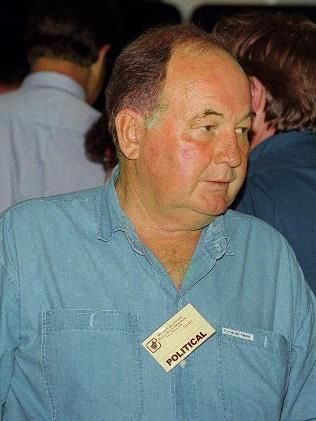
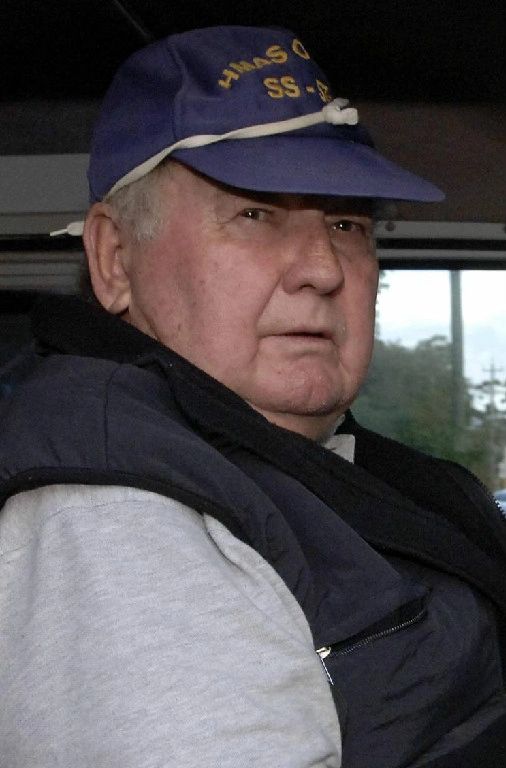

















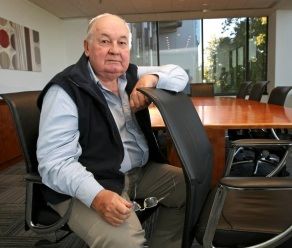



























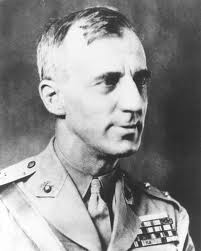


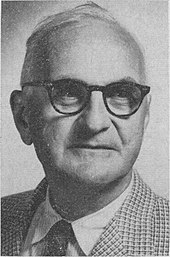

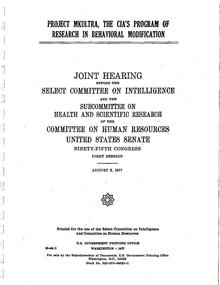

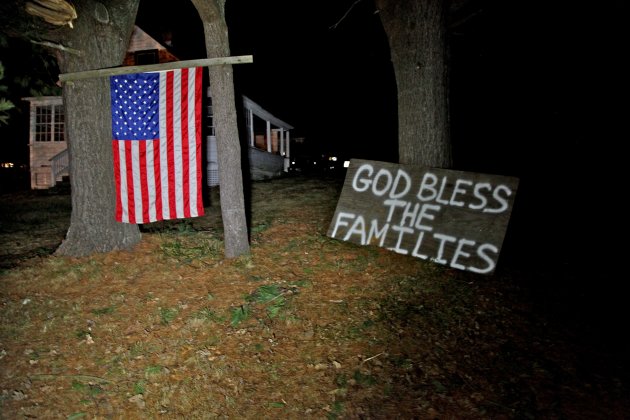















 First offender Kyle Montgomery will be sentenced next month for the killing
First offender Kyle Montgomery will be sentenced next month for the killing











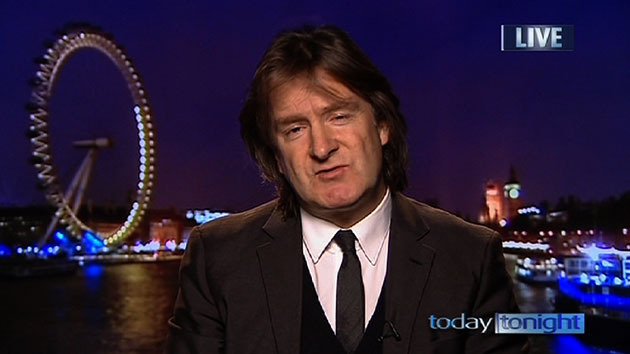






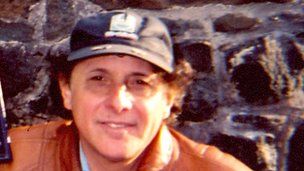
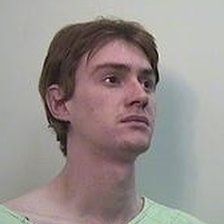
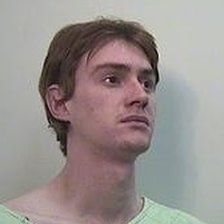
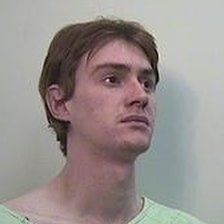
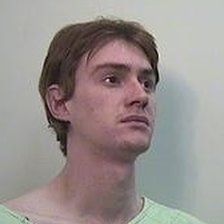
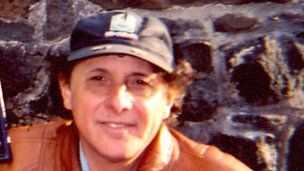
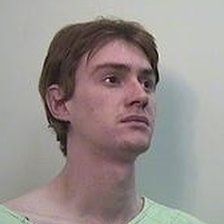










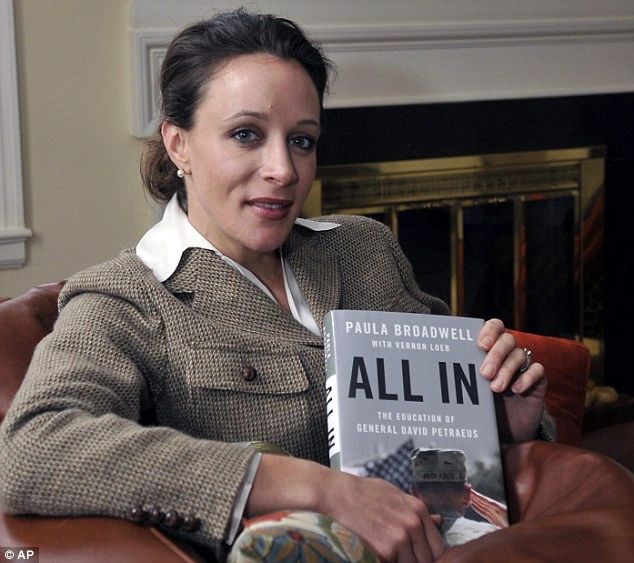


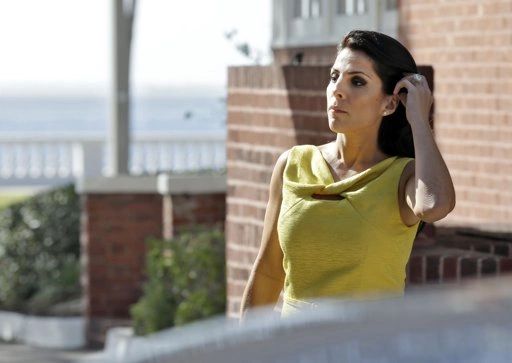































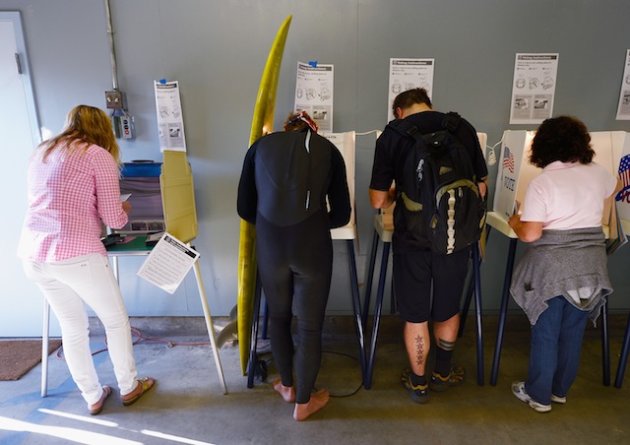

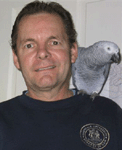



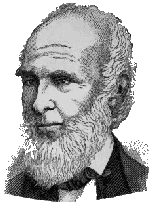




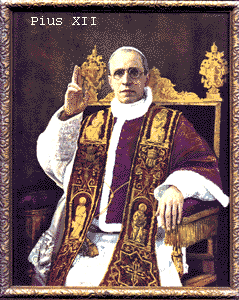









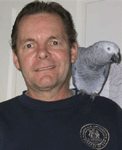 One question this Sunday is whether the Jesuits are an association of highly organized warrior priests? Another question is why has history covered important facts behind alleged Jesuit involvement in the assassination of Abraham Lincoln, as well as why did the U.S. government cut-off all diplomatic relations with the Vatican in 1867 as a result of its alleged connection with the murder of Lincoln?
One question this Sunday is whether the Jesuits are an association of highly organized warrior priests? Another question is why has history covered important facts behind alleged Jesuit involvement in the assassination of Abraham Lincoln, as well as why did the U.S. government cut-off all diplomatic relations with the Vatican in 1867 as a result of its alleged connection with the murder of Lincoln?
 THE strikes upon the World Trade Center and the Pentagon on September 11, 2001 marked a pivotal point in the evolution of the "experiment of popular government". What followed has been nothing short of a pronounced continuation of a religious war, which had its origins in the Middle Ages, using the armed forces of a compliant host nation or alliance of nations according to the wishes of the Papacy. The ultimate goal is the eventual re-location of this so-called "Chair of Peter" to Jerusalem in order to direct and control all the people of the earth and the complete destruction of anything not in accord with Her dictates. Chief among these ideals, which are hated by the Church of Rome, are freedom of conscience, freedom of religion, freedom of the press and freedom of association; in fact, every fundamental freedom on which the United States was founded.
THE strikes upon the World Trade Center and the Pentagon on September 11, 2001 marked a pivotal point in the evolution of the "experiment of popular government". What followed has been nothing short of a pronounced continuation of a religious war, which had its origins in the Middle Ages, using the armed forces of a compliant host nation or alliance of nations according to the wishes of the Papacy. The ultimate goal is the eventual re-location of this so-called "Chair of Peter" to Jerusalem in order to direct and control all the people of the earth and the complete destruction of anything not in accord with Her dictates. Chief among these ideals, which are hated by the Church of Rome, are freedom of conscience, freedom of religion, freedom of the press and freedom of association; in fact, every fundamental freedom on which the United States was founded.

 The next event was the death of Pope John Paul II. If anyone has doubts as to the political power the Roman Church has, these doubts were laid to rest as every national flag was lowered to half mast and every form of media all over North America, in the most worshipful manner bowed the knee, like those in Nebuchadnezzar's time and those in the days of the Caesars, to the man who claims to stand in the place of Almighty God. In this case a man who, while under Nazi occupation in Poland, vigorously helped to produce and sell 'Zyklon B' for chemical company I.G. Farben, a nerve gas which was used to kill those wholesale in the death camps of Europe. A man who, in spite of one of the world's greatest outbreaks of primarily homosexual pedophilia by Roman priests in recent memory, virtually swept the whole matter under the rug until he was finally forced to react by an outraged public. A man who presided over the Roman priesthood's led and encouraged genocide in Rwanda and the religious mass murders in the Balkans. A real godly man, n'est pas? Apparently every major political leader from around the world and representatives from every major religion thought so.
The next event was the death of Pope John Paul II. If anyone has doubts as to the political power the Roman Church has, these doubts were laid to rest as every national flag was lowered to half mast and every form of media all over North America, in the most worshipful manner bowed the knee, like those in Nebuchadnezzar's time and those in the days of the Caesars, to the man who claims to stand in the place of Almighty God. In this case a man who, while under Nazi occupation in Poland, vigorously helped to produce and sell 'Zyklon B' for chemical company I.G. Farben, a nerve gas which was used to kill those wholesale in the death camps of Europe. A man who, in spite of one of the world's greatest outbreaks of primarily homosexual pedophilia by Roman priests in recent memory, virtually swept the whole matter under the rug until he was finally forced to react by an outraged public. A man who presided over the Roman priesthood's led and encouraged genocide in Rwanda and the religious mass murders in the Balkans. A real godly man, n'est pas? Apparently every major political leader from around the world and representatives from every major religion thought so.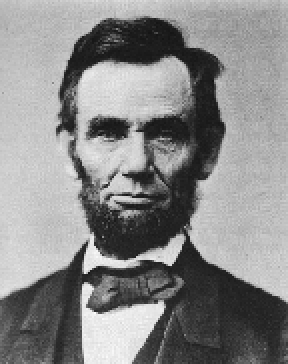 The Jesuits killed Lincoln and buried the evidence. But just as water seeks its own level, so does the truth eventually surface and make itself known. Deception and denial are only band-aids in the modern day world of intelligence, tooled by the Internet and other high tech investigative systems. Today anyone can become a good detective. If it had not been myself, someone else would have undertaken the task of doing the digging and piecing together the true story of President Lincoln's assassination.
The Jesuits killed Lincoln and buried the evidence. But just as water seeks its own level, so does the truth eventually surface and make itself known. Deception and denial are only band-aids in the modern day world of intelligence, tooled by the Internet and other high tech investigative systems. Today anyone can become a good detective. If it had not been myself, someone else would have undertaken the task of doing the digging and piecing together the true story of President Lincoln's assassination.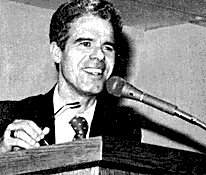






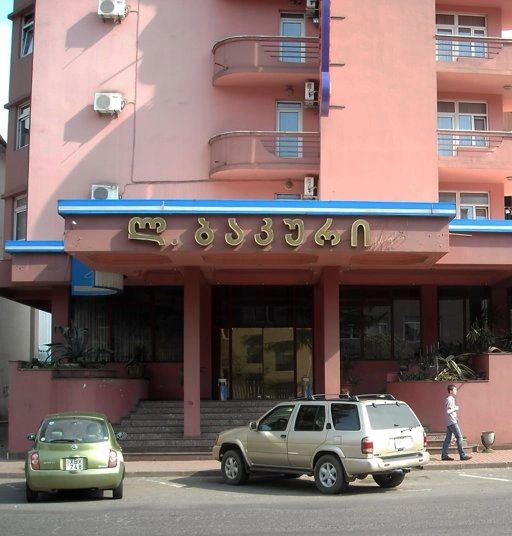

There are many mind control victims in the adult and child sex industry...many are becomming deprogrammed...others are not...they never stop watching you....always trying to discredit you...make other slaves your friends and lovers